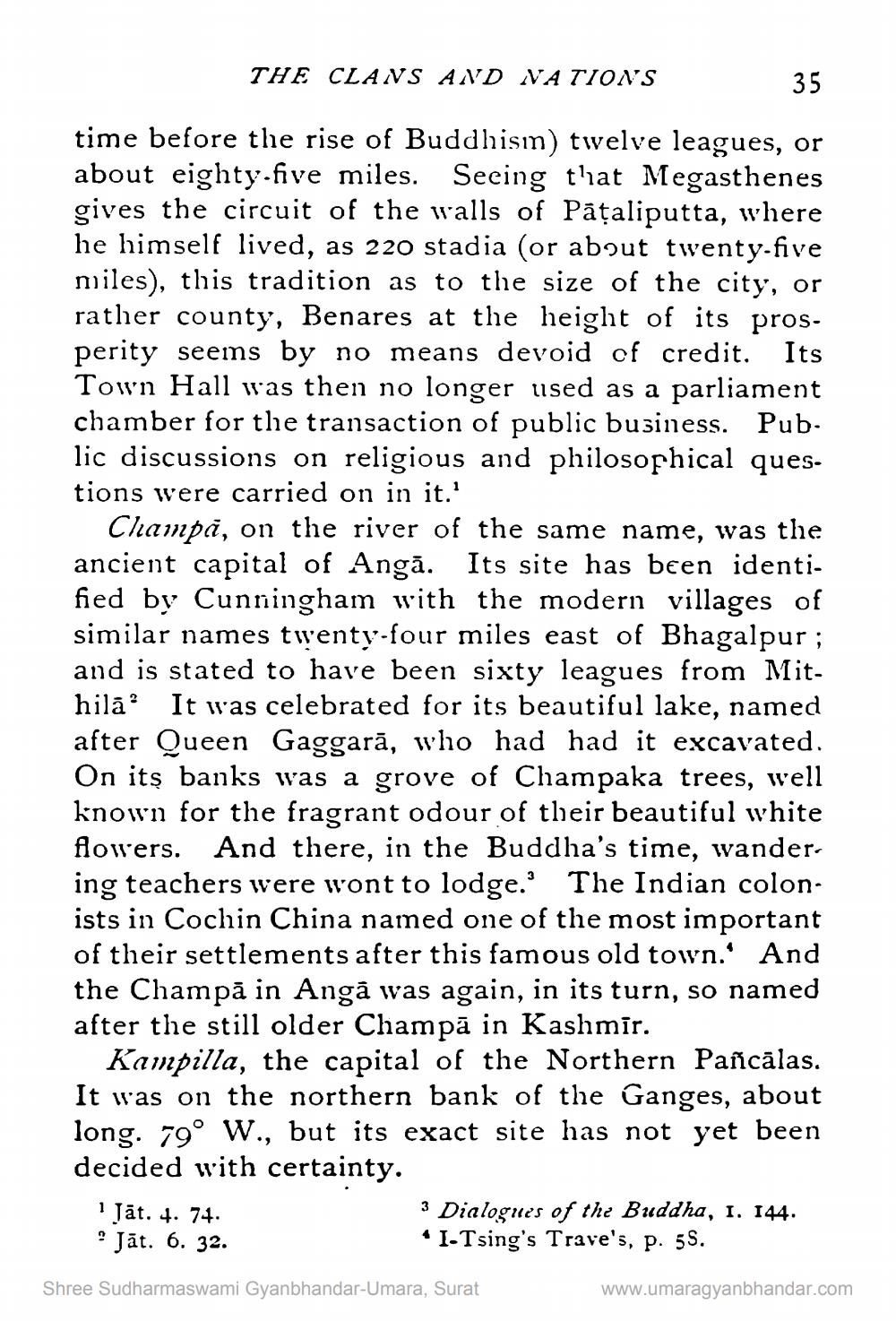________________
THE CLANS AND NATIONS
35
time before the rise of Buddhism) twelve leagues, or about eighty-five miles. Seeing that Megasthenes gives the circuit of the walls of Paṭaliputta, where he himself lived, as 220 stadia (or about twenty-five miles), this tradition as to the size of the city, or rather county, Benares at the height of its prosperity seems by no means devoid of credit. Its Town Hall was then no longer used as a parliament chamber for the transaction of public business. Pub. lic discussions on religious and philosophical questions were carried on in it.'
Champa, on the river of the same name, was the ancient capital of Angă. Its site has been identified by Cunningham with the modern villages of similar names twenty-four miles east of Bhagalpur; and is stated to have been sixty leagues from Mithila It was celebrated for its beautiful lake, named after Queen Gaggara, who had had it excavated. On its banks was a grove of Champaka trees, well known for the fragrant odour of their beautiful white flowers. And there, in the Buddha's time, wandering teachers were wont to lodge.' The Indian colonists in Cochin China named one of the most important of their settlements after this famous old town.' And the Champa in Angā was again, in its turn, so named after the still older Champā in Kashmir.
Kampilla, the capital of the Northern Pañcālas. It was on the northern bank of the Ganges, about long. 79° W., but its exact site has not yet been decided with certainty.
3 Dialogues of the Buddha, 1. 144. I-Tsing's Trave's, p. 58.
4
1 Jāt. 4. 74. Jāt. 6. 32.
Shree Sudharmaswami Gyanbhandar-Umara, Surat
www.umaragyanbhandar.com




